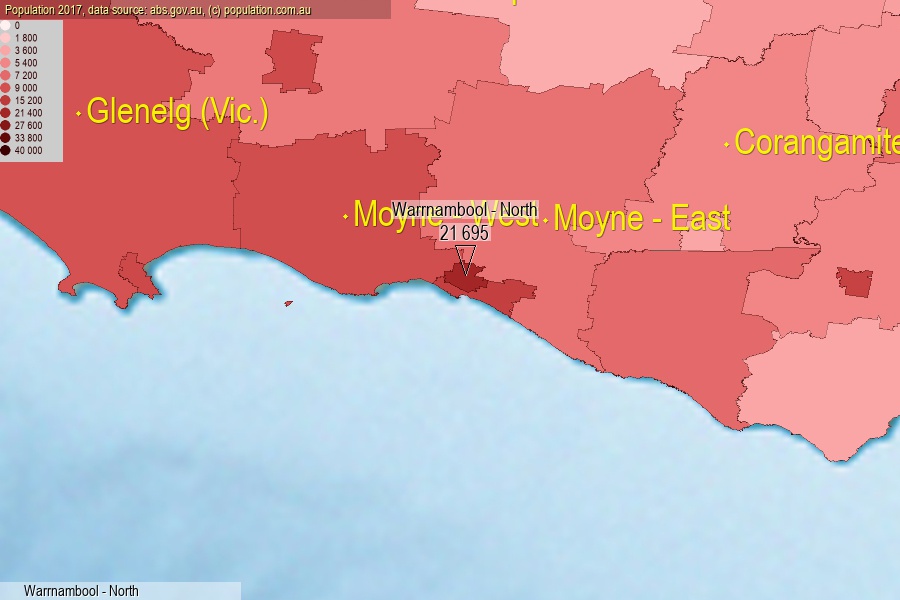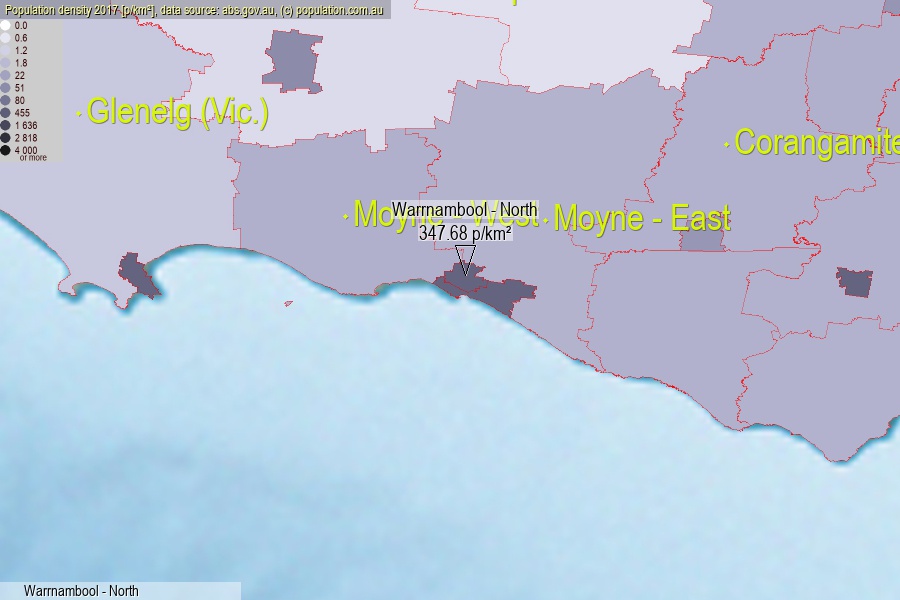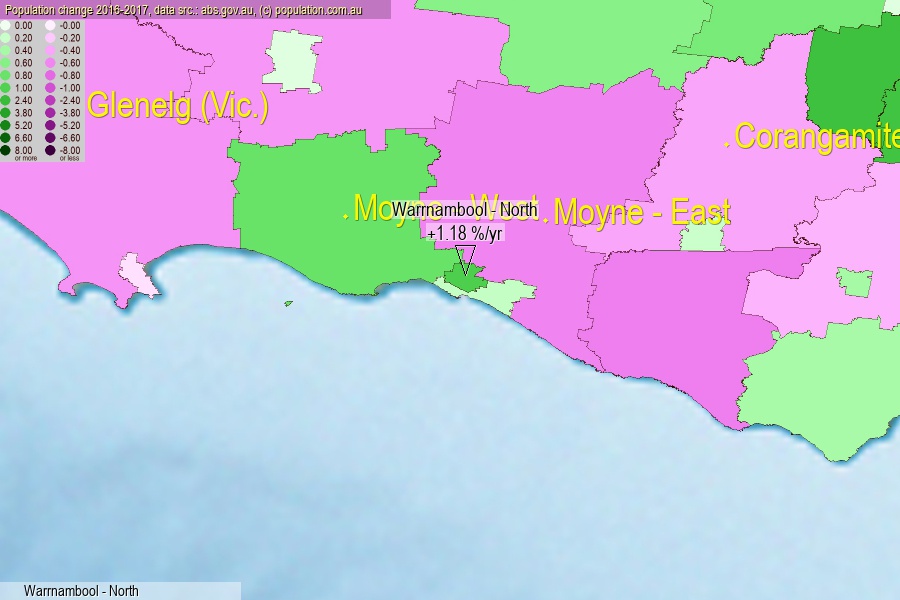 population.com.au
population.com.auLast official estimated population of Warrnambool - North (as Statistical Area Level 2) was 21 695 people (on 2017-06-30)[2]. This was 0.09% of total Australian population and 0.337% of VIC population. Area of Warrnambool - North is 62.40 km², in this year population density was 347.68 p/km² . If population growth rate would be same as in period 2016-2017 (+1.18%/yr), Warrnambool - North population in 2025 would be 23 829. [0]



Click to enlarge. Warrnambool - North is located in the center of the images.
Population [people], population density [p./km²] and population change [%/year] [2]
View borders » (new window) [4]
[2001-2002] +2.32 %/Yr.
[2002-2003] +1.59 %/Yr.
[2003-2004] +1.19 %/Yr.
[2004-2005] +1.31 %/Yr.
[2005-2006] +1.96 %/Yr.
[2006-2007] +1.88 %/Yr.
[2007-2008] +1.22 %/Yr.
[2008-2009] +1.37 %/Yr.
[2009-2010] +1.37 %/Yr.
[2010-2011] +1.25 %/Yr.
[2011-2012] +1.88 %/Yr.
[2012-2013] +1.77 %/Yr.
[2013-2014] +1.54 %/Yr.
[2014-2015] +1.37 %/Yr.
[2015-2016] +1.06 %/Yr.
[2016-2017] +1.18 %/Yr.
[0] Calculated with linear interpolation from officially estimated population
[1] Read more about SA2 and Australian Statistical Geography Standard (ASGS) on abs.gov.au
[2] Population data from Australian Bureau of Statistics (Population and density: 2017; change: 2016-2017)
[3] Digital Boundaries: Australian Statistical Geography Standard (ASGS) 2016.
[4] Border coordinates are simplifyed using Ramer-Douglas-Peucker algorithm.